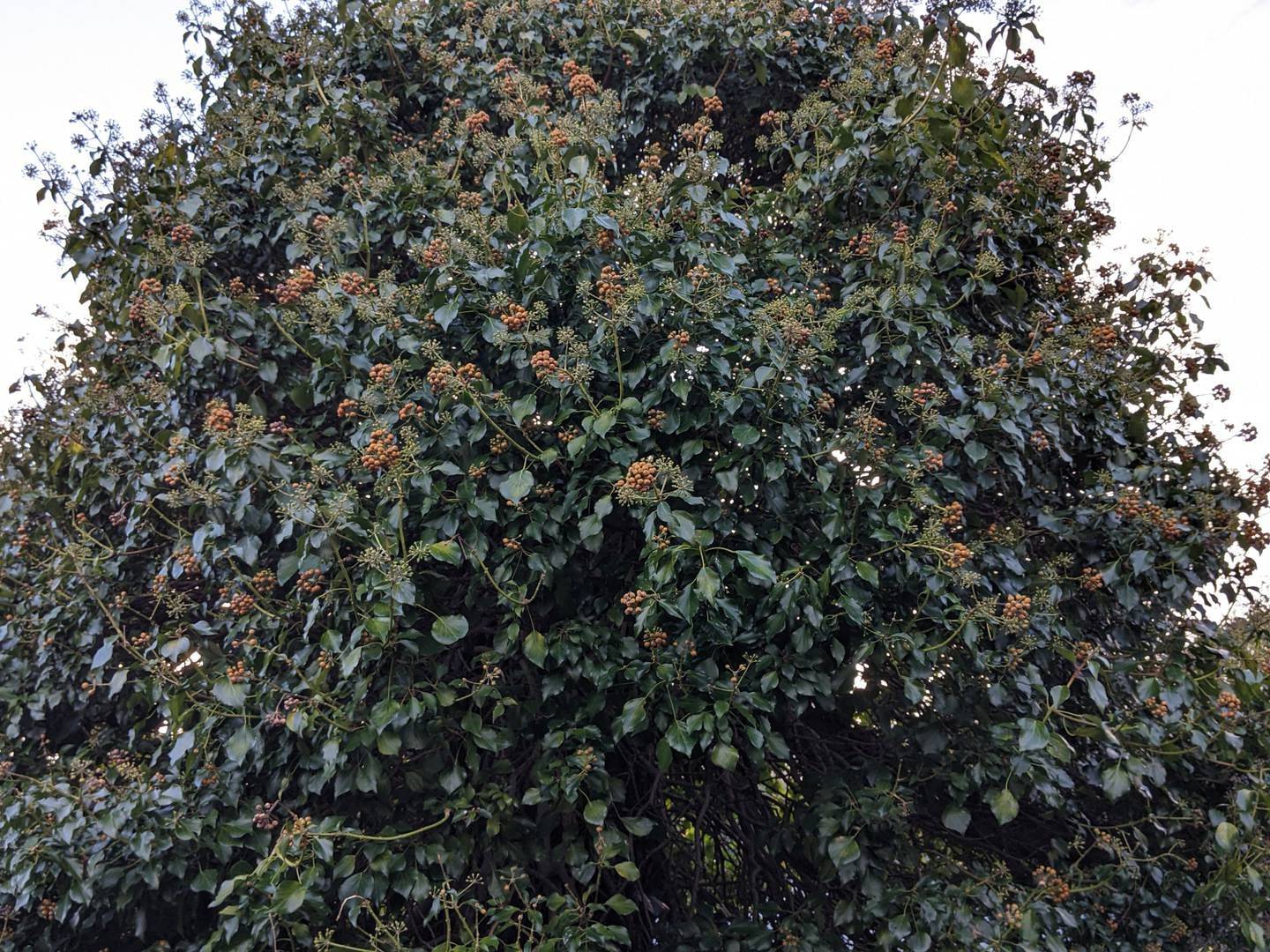Here is a photograph, taken on April 23rd of a group of sandwich terns on Doughmore Beach near Doonbeg, Co Clare. John Glynn, Kilrush
This is an excellent picture of our largest breeding tern, showing the all-black bill with just the yellow tip, the shaggy crest on the back of the head and the sand-eel prey, which one of them has successfully caught.
We have a yellow-berried ivy. I have never seen one elsewhere. How does it happen and how rare is it? Tony Garahy, Co Offaly
This subspecies of the normal ivy, Hedera helix subsp poetarum, is native to Greece and Turkey but was introduced to this side of Europe, possibly as a garden plant. It was first found in the wild in Ireland in 2016, growing along a 0.5km stretch of roadside in Co Wexford. Yours is the first record for Co Offaly. You can try planting a seed from the berry to see if it breeds true.
:quality(70)/cloudfront-eu-central-1.images.arcpublishing.com/irishtimes/ED2SH5VOZZE33E4CZBZTFJ2AT4.jpg)
We saw this little structure attached to a heather plant in the Featherbeds, off the Military Road, Co Wicklow. At first we thought it was a chrysalis but wondered if it was a collection of eggs. It was about 3.5-4cm in length, 2-2.5cm high and maybe 2cm in breadth at its widest point. Sarah Farrell, Dublin 8
These are the eggs of the vapourer moth. The female is flightless and so, having no size or weight limitations, her large, rounded abdomen can contain hundreds of eggs. These are laid in autumn as an egg mass on the maternal cocoon and will hatch out in May. The caterpillars feed on heather and soon go on to form a chrysalis. Adults emerge in summer. The flightless female remains on her cocoon and attracts males by giving off pheromones.
:quality(70)/cloudfront-eu-central-1.images.arcpublishing.com/irishtimes/GWQC34TMBRBMHFA2AHDOUQLJPI.jpg)
Last September in Ravensdale Woods, Co Louth I saw this growth similar to yellow brain fungus on a dead tree root. Can you confirm please? David McFadden, Dublin
I can confirm that it is definitely not a yellow brain fungus, which has soft, flabby, gelatinous lobes and folds. Your picture is of yellow stagshorn (Calocera viscosa), which is tough, rubbery and pliant and, repeatedly, dichotomously branched. It occurs on decaying conifer wood that is often buried. It is widespread and common between late summer and early winter.
:quality(70)/cloudfront-eu-central-1.images.arcpublishing.com/irishtimes/OOXILJUHDNDV5HBBN6BQGVVHQM.jpg)
I spotted what I thought was the first peacock butterfly of the year in the garden in Clontarf, the morning after St Patrick’s Day. I now think it was in fact a comma and I am simply thrilled, as this was the first one I have ever seen. Please confirm it was a comma, and do you think it is unusual to see one this time of the year? Lena Clarke, Dublin
I can indeed confirm that it is a comma – the long-lived over-wintering form – as opposed to the July and August hutchinsoni form. The specimen you saw has overwintered as an adult and so is on the wing early in the year. Having located a reviving few drinks of nectar from lesser celandine or dandelion flowers, it will be ready for action. Mating occurs up in the treetops and the females lay their eggs singly on nettle leaves. The new generation hatches out 17 days later and will be on the wing by July and August. This generation is brighter, with reduced paler dark marking. But they still have the characteristic scalloped edges to the wings and the white prominent “c” comma mark in the centre of the hindwing underside, which gives the butterfly its name. It is the offspring of this second generation that go on to overwinter.
Please submit your nature query, observation, or photo with a location, via irishtimes.com/eyeonnature




